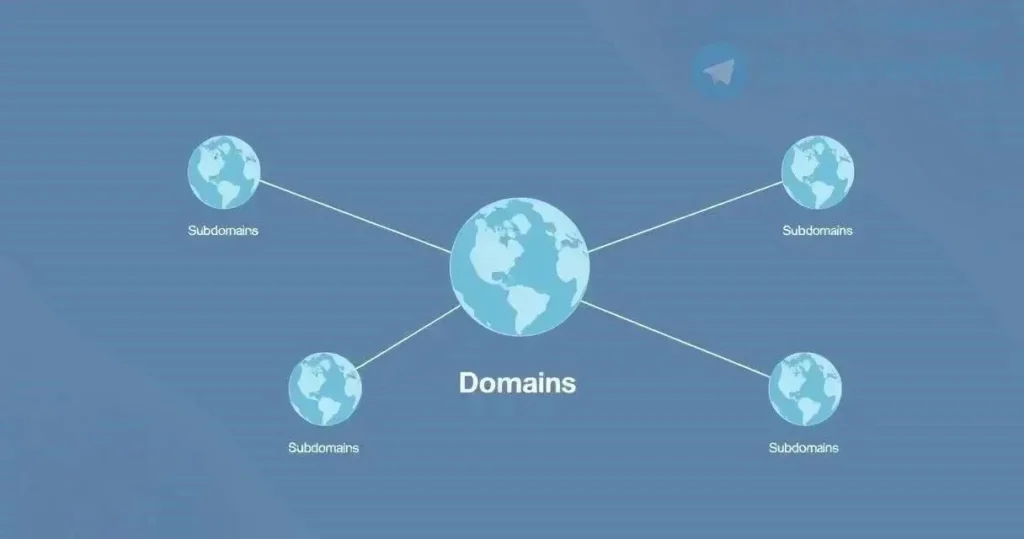Subdomain Definition, Uses, and Features: A Comprehensive Guide
Want to structure your website like a boss? Learn what a subdomain is, how it works, and why it’s a game-changer for organization! Get the subdomain scoop now!

In the vast landscape of the internet, understanding the nuances of domain names is crucial for website owners and users alike․ One such nuance is the concept of a subdomain․ A subdomain is essentially a prefix added to your main domain name, allowing you to organize and categorize different sections of your website․ It acts as a separate entity within your primary domain, offering flexibility and improved site structure․ This article will delve into the definition of a subdomain, explore its various uses, and highlight its key features, providing a comprehensive understanding of this valuable web tool․
Subdomain Definition: Breaking Down the Basics
A subdomain is a domain that is part of a larger domain․ It’s created by adding a prefix to your existing domain name, separated by a dot․ For example, if your main domain is “example․com,” a subdomain could be “blog․example․com” or “shop․example․com․” Think of it as a branch off the main trunk of your website․ It allows you to create distinct sections without needing to purchase entirely new domain names․
Key Uses of Subdomains: Organizing Your Website
Subdomains offer a variety of practical applications for website owners․ Here are some common uses:
- Creating a Blog: A subdomain like “blog․example․com” can host your blog, separating it from your main website content․
- Setting up an Online Store: “shop․example․com” can be used for an e-commerce platform, keeping product listings and shopping cart functionality separate․
- Hosting a Support Portal: “support․example․com” can provide a dedicated space for customer support resources, FAQs, and contact information․
- Creating a Mobile Version: “m․example․com” can host a mobile-optimized version of your website․
- Testing and Development: “dev․example․com” or “test․example․com” can be used for staging and testing new website features before they go live․
Subdomain Features: Benefits and Advantages
Using subdomains offers several advantages:
- Improved Organization: Subdomains help organize your website content into logical sections, making it easier for users to navigate․
- Enhanced SEO: While the impact is debated, some believe subdomains can help target specific keywords and improve search engine rankings for particular sections of your site․
- Cost-Effective: Creating subdomains is generally free and doesn’t require purchasing additional domain names․
- Easy Management: Subdomains can be managed separately from your main domain, allowing for more granular control over content and settings․
Subdomain vs․ Subdirectory: Understanding the Difference
It’s important to distinguish between subdomains and subdirectories (also known as subfolders)․ A subdirectory is a folder within your main domain, such as “example․com/blog․” While both can be used to organize content, subdomains are treated as separate websites by search engines, offering more flexibility in terms of hosting and management․
How to Create a Subdomain: A Step-by-Step Guide
Creating a subdomain typically involves accessing your domain registrar’s control panel or your web hosting account․ The exact steps may vary depending on your provider, but generally, you’ll need to:
- Log in to your domain registrar or web hosting account․
- Find the DNS settings or domain management section․
- Look for an option to create a subdomain․
- Enter the desired subdomain prefix (e․g․, “blog”)․
- Point the subdomain to the appropriate directory on your server․
- Save your changes․
Factoid: You can create multiple subdomains for a single domain, allowing for a highly structured and organized website․
Subdomain Security: Best Practices
Just like your main domain, subdomains should be secured with an SSL certificate to encrypt data transmitted between the server and users’ browsers․ This is especially important if the subdomain handles sensitive information, such as login credentials or payment details․ Ensure your hosting provider offers SSL certificates for subdomains, or consider using a service like Let’s Encrypt to obtain a free certificate․
FAQ: Frequently Asked Questions About Subdomains
What is the difference between a subdomain and a domain?
A subdomain is a part of a larger domain․ It’s a prefix added to your existing domain name, while a domain is the main address of your website․
Are subdomains good for SEO?
The SEO benefits of subdomains are debated․ Some believe they can help target specific keywords, while others argue that subdirectories are more effective․ It depends on your specific SEO strategy․
How many subdomains can I create?
The number of subdomains you can create depends on your hosting provider․ Most providers allow for a large number of subdomains, often unlimited․
Do subdomains need their own SSL certificates?
Yes, it’s highly recommended to secure subdomains with SSL certificates to protect user data․
Are subdomains free?
Creating subdomains is generally free, as it’s a feature offered by most domain registrars and web hosting providers․
Subdomains are a valuable tool for website owners looking to organize their content, improve navigation, and enhance their online presence․ By understanding the definition, uses, and features of subdomains, you can effectively leverage them to create a more structured and user-friendly website․ Whether you’re creating a blog, setting up an online store, or hosting a support portal, subdomains offer a flexible and cost-effective solution for managing your online content․
Subdomain Management: Tools and Techniques
Effective subdomain management is crucial for maintaining a well-organized and functional website․ Several tools and techniques can aid in this process․ Firstly, a clear naming convention is essential․ Consistent and descriptive subdomain names make it easier to identify the purpose of each subdomain at a glance․ For example, using “careers․example․com” instead of “hr․example․com” provides more immediate clarity․
Secondly, utilizing a robust content management system (CMS) that supports subdomain management is highly beneficial․ Many popular CMS platforms, such as WordPress, Drupal, and Joomla, allow you to easily create and manage subdomains, assign different themes and plugins, and control user access․ This centralized management simplifies the process of updating content, maintaining security, and tracking performance across all your subdomains․
Thirdly, monitoring the performance of your subdomains is vital for identifying areas for improvement․ Tools like Google Analytics can be used to track traffic, user behavior, and conversion rates on each subdomain․ This data can then be used to optimize content, improve navigation, and enhance the overall user experience․ Regularly reviewing these metrics allows you to make informed decisions about the structure and content of your subdomains․
Subdomain and Email: Setting Up Email Addresses
Subdomains can also be used to create dedicated email addresses․ For example, if you have a subdomain for customer support (support․example․com), you can create email addresses like support@support․example․com․ This helps to further organize your communications and provides a professional image․ Setting up email addresses for subdomains typically involves configuring MX records in your DNS settings․ Your hosting provider or email service provider can provide specific instructions on how to do this․
Subdomain and SEO: Advanced Considerations
While the basic SEO benefits of subdomains are often discussed, there are more advanced considerations to keep in mind․ One key aspect is the potential for keyword cannibalization․ If multiple subdomains target the same keywords, they may compete with each other in search engine rankings․ To avoid this, it’s important to carefully plan your keyword strategy and ensure that each subdomain focuses on a unique set of keywords․
Another important consideration is the internal linking structure between your main domain and your subdomains․ Creating a strong network of internal links can help search engines understand the relationship between different sections of your website and improve overall SEO performance․ However, it’s important to avoid over-linking or using irrelevant links, as this can be seen as manipulative and harm your rankings․
- Keyword Research: Conduct thorough keyword research to identify the most relevant keywords for each subdomain․
- Content Optimization: Optimize the content on each subdomain for its target keywords, including title tags, meta descriptions, and header tags․
- Link Building: Build high-quality backlinks to your subdomains to improve their authority and visibility in search engine results․
Future of Subdomains: Emerging Trends
The role of subdomains is likely to evolve in the future as the web continues to change․ One emerging trend is the use of subdomains for personalized content delivery․ By creating subdomains that cater to specific user segments or demographics, businesses can provide a more tailored and engaging experience․ For example, a company might create a subdomain for users in a particular geographic region or for users with specific interests․
Another trend is the increasing use of subdomains for microservices architecture․ In this approach, different parts of a website are developed and deployed as independent services, each running on its own subdomain․ This allows for greater flexibility, scalability, and resilience․ As microservices become more popular, the use of subdomains is likely to increase as well․
Factoid: Some companies are experimenting with using subdomains to create entirely separate brands or product lines, allowing them to target different markets without diluting their main brand․




